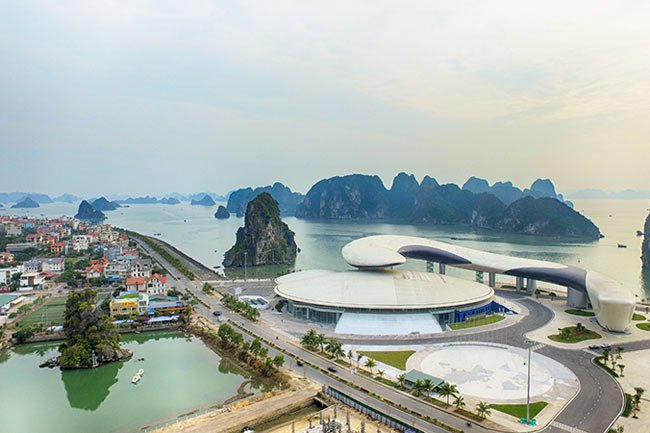
A stunning view of Halong Bay in the northern province of Quang Ninh. The province has made various improvements, especially in administrative procedures, paperwork and land procedures. (Photo: Quang Ninh Newspaper)
The PCI 2018 is the result of a major ongoing collaborative effort between the Vietnam Chamber of Commerce and Industry and the U.S. Agency for International Development.
This year’s edition is based on responses from 12,250 enterprises from 63 cities and provinces, as well as over 1,500 foreign-invested enterprises in 20 provinces and cities with the highest concentration of foreign direct investment.
Since 2005, the signature PCI has ranked Vietnam’s 63 provinces based on economic governance areas that affect private sector development.
The overall PCI rankings are remarkably stable. Quang Ninh Province has maintained its top ranking for the second consecutive year, with 70.36 points.
The province maintained its momentum by applying the “four on-site principle” – receiving, reviewing, approving and returning the results of administrative applications at public administration centers – at the provincial and district levels.
The performance of all local government agencies related to business can be tracked through their own competitiveness index at the department and district levels. The province also hosts an Entrepreneurs’ Café, where provincial leaders regularly meet with representatives of firms on an informal basis to resolve their problems.
Second in this year’s ranking is the Mekong Delta province of Dong Thap, which surpassed its own record on the aggregate PCI score, scoring 70.19 points and continuing its 11-year run in the top five. This success is the result of effective management by a provincial administration that must overcome severe geographical and infrastructure disadvantages.
Coming in third, fourth and fifth are Long An, Ben Tre and Danang, respectively. The lower half of the top 10 lists Binh Duong, Quang Nam, Vinh Long, Hanoi and HCMC.
Dramatic improvement in governance
In 2018, the Core PCI, which measures economic governance over time, reached a score of 61.76, the highest score achieved since the first PCI report in 2005.
There are changes in local economic governance between 2017 and 2018. Governance sub-indices with robust improvement include informal charges, which represent the success of the anticorruption campaign; policy bias; and administrative reforms. Land access and law and order as well as proactive leadership had more modest improvements.
However, declines were observed in the remaining areas of transparency, labor policy, business support services and business entry costs.
Beyond these broader changes, the report also highlights six critical trends that reflect progress on policies begun by the new Vietnamese leadership in 2016.
Petty corruption in the form of small facilitation fees that firms had to pay to receive licenses or other documentation abated in 2018.
Only 54.8% of firms claimed they had paid informal charges in 2018 to expedite procedures, the lowest level seen in the last five years. The amounts of these payments have also been reduced, with only 7.1% of respondents stating that it cost more than 10% of turnover to pay informal charges.
With regard to settling administrative procedures, 58.2% of firms confirmed the existence of corruption in these activities.
Despite these successes, the report noted that the informal charges indicators remain quite high, implying that more sustained effort is needed, particularly with the cooperation of businesses as well.
Meanwhile, provincial authorities are demonstrating a more proactive approach and creativity in executing policies. In 2018, 46.2% of respondents rated provincial authorities’ attitude toward the private sector as “positive.” This figure has improved annually since its low of 35.1% in 2015.
However, business entry procedures are still burdensome. The report found that many firms still believe entry costs are too high, with 15.8% having to wait over one month to complete all the required paperwork, aside from obtaining the business license, to become fully legal.
Also, transparency remains low. Adequate access to information remains an ongoing problem.
Optimism remains high
Business confidence in 2018 remained at a fairly high level, with 49.3% of the surveyed firms planning to expand their operations in the following two years. The share of operations intending to maintain their business at its present scale is 42.4%.
Despite the generally high levels of confidence, 8.3% of businesses plan to reduce their operations or close down, the third-highest proportion seen since 2005. The only other instances of businesses planning closures at this rate were recorded during the economic downturn in 2012-2014.
However, higher closure rates may indicate a more dynamic business environment and greater consolidation and productivity among successful businesses, which are signs of economic development and upgrades.
Some 56% of foreign-invested enterprises plan to increase the size of their operations in the coming years. Meanwhile, 12% of the surveyed foreign firms increased their investments over the past year, and 58% hired more employees. However, all the three figures are down slightly from the previous year.

















